WEST researchers investigate pathogens in Arizona’s waters and around the world
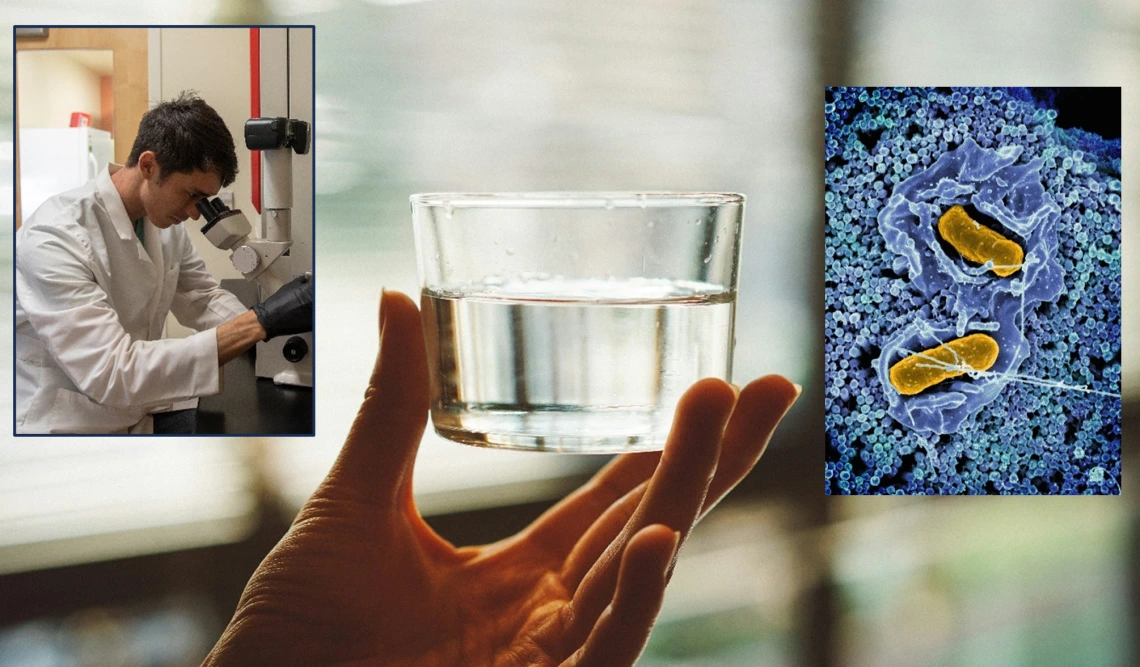
Images courtesy of University of Arizona, Manki Kim on Unsplash, and National Institute of Allergy and Infectious Diseases on Unsplash.
Focused primarily on waterborne diseases and contaminants, a team of microbiologists at WEST Center conducts robust research to improve human and environmental health.
In early September 2024, Dr. Gerba – a well-known microbiologist and pioneer of fate and transport of pathogens – described the details of several prominent past projects as well as ongoing research efforts at WEST Center and around the world. Dr. Gerba has been involved in over 200 projects in the past several years and is currently working on 20 projects. Many projects involve external relationships; provide student learning opportunity; and are in partnership with other WEST faculty, such as Drs. Betancourt and Bright, and research staff Dr. Boone, Jon Lehman, and Justin Clark.
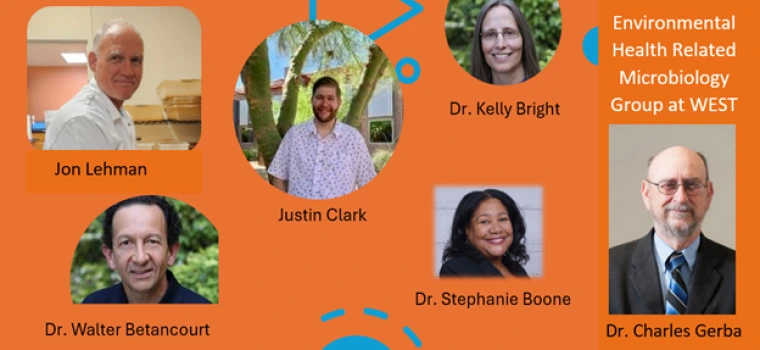
Several especially interesting projects in the past years include:
- Image
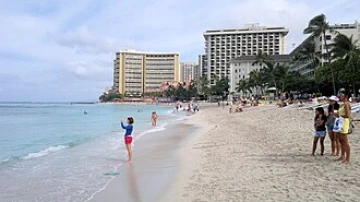
Waikiki Beach. Photo courtesy of Wikipedia.
Surfing with Sewage: This five-year project investigated whether raw sewage discharges might be polluting Waikiki Beach. Honolulu, Hawaii was the last city in the United States to discharge raw sewage into the ocean, and a concern arose that pathogens from the discharge could return to nearby waters and pose a threat to people at the beach. The study determined that salinity brings sewage to the surface, rather than mixing with ocean water, and Kona Winds which blow from the SW/SSW bring sewage to beach areas. Results were instructive: 1) Treat sewage; and 2) Instruct residents and visitors to not go to the beach when Kona Winds blow.
Image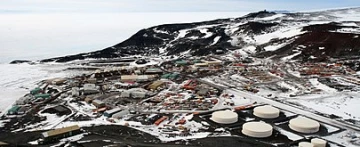
McMurdo Station from Observation Hill. Photo courtesy of Wikipedia.
- Pursuing Penguin Poop: Several years ago, McMurdo Station, an American Antarctic research station on the southern tip of Ross Island, began to get fecal bacteria in their drinking water and requested that researchers aid in determining its origin. A graduate student of Dr. Gerba’s spent 3 months in Antarctica collecting swabs from penguins and seals to better understand pathogen presence and possible movement through the environment. The study found that the origin of bacteria in drinking water was, in fact, due to past human activity and changes in climate. The station had been dumping raw sewage in the ocean for 50 years, and sewage icebergs had accumulated. Due to rising temperature due to global climate change, these sewage bergs were melting. The study revealed that the station’s population was getting their own human e. coli back into their drinking water supply. With that knowledge, efforts could be directed to ameliorate the situation.
- Sewage in Space: Dr. Gerba also worked with NASA on safe sewage recycling in space. At the space station, the water supply recirculates every 48 hours, and bathroom (e.g. shower) and kitchen water feeds to drinking water sources. In this project, the research team investigated whether purification systems could produce recycled water free of disease-causing organisms such that it could be safely drunk. Dr. Gerba’s team worked with NASA and the astronauts on mock-ups of the space station to develop and assess novel treatment and disinfection systems. Highlights of this study appeared in the book Packing for Mars by Mary Roach.
Current projects include:
- Image

Potable water reuse/flush to faucet water recycling. Image courtesy of Dr. Gerba.
Flush to Faucet: This five-year U.S. Environmental Protection Agency (EPA) project involves multiple partners across the country. In order for recycled wastewater/sewage to be safely consumable, 20 logs or 99.999% of viruses must be removed. Chemicals are also targets for removal, but viruses are the most difficult contaminant to remove due to the evolving nature of the obligate intercellular parasites. This study will determine the amount of virus removal achievable by different treatment technologies through monitoring five advanced wastewater treatment plants across the U.S.
Environmentally Friendly Disinfectants: The microbiology team at WEST Center is also working to develop more environmentally friendly disinfectants by using natural products like oregano, citric acid, and cinnamon, which are all antimicrobial.
Image
Cinnamon contains natural antimicrobial properties. Photo courtesy of Wikipedia.
Cinnamaldehyde is a great antiviral/antimicrobial, but the doses needed for household or commercial disinfection are too high for typical use. As stated by Dr. Gerba, “It would smell like a cinnamon bun!” This project is using computer driven molecular docking to optimize the inactivation/killing of viruses and bacteria. For example, artificial intelligence (AI) is being utilized to locate the specific sites on pathogens where the cinnamon or cinnamaldehyde acts; then, combining that with other natural antimicrobials like citric acid, a multi-hit can be targeted to the most sensitive sites on the viral capsid or coat of the bacteria. Results may allow for much lower doses of natural antimicrobials to be used when in combination with one another, and provide for the development of a new generation of environmentally friendly natural disinfection products.
Image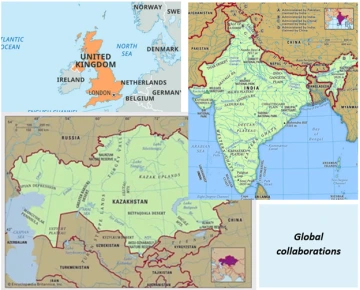
WEST collaborations reach beyond the United States.
- International Projects: Projects being conducted abroad by Dr. Gerba and other WEST microbiologists include: 1) A U.S. Department of Agriculture (USDA)-sponsored project to model water quality with respect to irrigation and E.coli. This project is in collaboration with the University of North Kazakhstan. 2) An assessment of hygiene in restrooms in India and the United Kingdom. A focus of this project is to examine aerosol contamination from different styles/mechanisms of toilets and investigate interventions that may reduce infectious disease risk. Collaborators with the University of Arizona include the Public Health Research Institute of India and Leeds University.
This team, one of several dynamic and innovative microbiology groups at WEST, is actively involved in research to advance both public health and environmental resiliency. They provide University of Arizona students with essential field and laboratory training and experience, all while doing impactful work for Arizonans and people around the world.

